Investing in ‘safe havens’
Prestige PR
Włodarzewska 81C lok 81
02-393 Warszawa
i.wisniewska|prestigepr.pl| |i.wisniewska|prestigepr.pl
508 927 958
www.prestigepr.pl
Authors: Marcin Purgal, Senior Director, Investment and Paulina Brzeszkiewicz-Kuczyńska, Research and Data Manager at Avison Young
How to invest in challenging times? How to diversify one’s investment portfolio to minimize risk? What properties are investors allocating their capital in nowadays?
One of the basic rules of investing says: ‘don’t put all your eggs in one basket.’ We can secure capital through broadly understood diversification, i.e. dividing the portfolio into different kinds of assets. Spreading the risk may involve allocating part of the funds to investing in ‘safe havens’, for example investments in gold, bonds, investment deposits, or more risky - in shares of listed companies, ETF funds, FOREX or futures contracts. The activity that also seems to be the safest in the long term is investing in residential and commercial real estate. Looking at the current residential sector and rising land prices as well as construction costs, which translate into an increase in apartment prices, we can assume that the value of such an investment should stand and bring relative returns in the future by, among others, increasing its value.
Portfolio diversification and variety is the foundation of investors’ strategy. However, spreading the risk and investing in different kinds of assets should not be excessive, so that investors don’t lose control over them. A certain regularity in the allocation of funds should protect investors against market fluctuations and business cycles, and thus against partial loss of capital. The investment portfolio can be adjusted to the current level of risks and possible potential market changes. The adopted strategy may also evolve from a conservative model to a more aggressive one and vice versa.
Real estate for bigger players
If we consider commercial assets as part of the portfolio, we must take into account a relatively high entry barrier. Moreover, there are not many products on the current Polish market that would allow smaller investors to enter this market sector. There are no typical REIT funds (Real Estate Investment Trust) where an investor could purchase participation units and thus become a co-owner of the property and enjoy returns from it. A professional entity would then take care of the real estate data and minimize the risks associated with the investment at every stage, whether it’s purchasing, active management or exiting from such an investment.
Investing in commercial real estate - like any other - is, of course, burdened with risk, but the advantage of investing in them is regular and predictable rental income, an increase in their value over the years and relative control over the investment.
Solid foundations of the Polish real estate market
The Polish commercial real estate market has solid foundations, and its active investors have proven that they can adapt to changes. This is evidenced by the results achieved in recent, difficult years. This year, however, we are dealing with a slowdown in the investment transaction market, the main reason for which is the ongoing process of adjusting the price expectations of sellers and buyers. Nevertheless, this situation may create opportunities for strategic purchases as market prices become increasingly favorable.
Despite the significantly reduced transaction volume recorded this year, investment activity remains high in terms of the number of transactions. Smaller projects dominate the transaction structure. After the first half of this year, with few portfolio transactions, the third quarter brought several of them in the warehouse and retail sectors, but none of them exceeded the value of EUR 100 million.
Interestingly, despite more unfavorable economic conditions, Polish investment market welcomed three new players this year - EIKA Asset Management, FREY, which acquired a prime retail park in Gdansk, and an Austrian family office, which purchased a portfolio of convenience retail properties in Silesia.
Cash investors with a strong advantage
Banks are very selective in their approach to project financing and are currently undertaking mainly refinancing activities. Therefore, cash investors have a very strong advantage and the ability to make good deals. In recent months, we have also seen greater activity of Polish capital, primarily looking for real estate price reductions and outstanding opportunities.
In 2024, we will witness a significant number of commercial bond redemptions generated by developers or investors and a large number of refinancings. This may therefore be a time of intense talks between owners and banks, which may translate into new assets emerging on the market.
Office buildings – old buildings or core+
With growing demand and an increasingly noticeable shortage of land for development, older office properties are now increasingly often becoming the object of investors' interest. Multiple entities see the potential in transforming such facilities into PRS and co-living projects, as it can often be much cheaper and faster than building from scratch.
Investors interested in office assets focus on Warsaw, especially the cheaper areas of Mokotow and Słuzewiec. All transactions registered in this sector in the first nine months of this year, took place in the capital city. Core+ assets are on the radar, as well as value-add and opportunistic assets intended for reconstruction or change of function.
Warehouses – takeover of existing facilities
In the warehouse sector, investors are also currently focusing on smaller projects. In the period of Q1-Q3 2023, only two out of 20 closed transactions exceeded the threshold of EUR 100 million. At that time, the warehouse sector accounted for half of the total investment volume registered in the real estate sector in Poland. We are also currently witnessing many sale and leaseback transactions in the warehouse sector.
The new price dynamics may encourage major warehouse developers to favor acquisition strategies rather than building new facilities. The costs of new investments are gradually approaching the attractiveness of takeovers, which have now become a real alternative. This type of action is illustrated by, among others, the example of GLP, which acquired a warehouse in Gdansk from 7R in Q3 2023 and announced further acquisitions on the Polish market.
PRS – dormant potential
Investors present during the CEE Property Forum in Vienna indicated the PRS sector as the second asset class, after warehouses, currently offering the best prospects. The influx of immigrants and the residential deficit in Poland increase the demand for this type of real estate. We expect that the Polish market will attract both local and foreign investors who can achieve higher rates of return in this sector than in other Western European markets.
Retail parks and shopping malls for redevelopment wanted
The retail real estate investment market in Poland currently attracts investors with three main types of assets. The most popular are retail parks and convenience facilities, which remain a safe investment. In turn, the high interest in regional shopping centers and opportunistic redevelopment assets confirms that investors are consistently looking for strategic purchases. Competitive prices and attractive locations of older shopping malls make them an alternative with a higher rate of return.
In times of market uncertainty, investors focus on the best projects that offer the prospect of long and stable income. We expect that in the near future the retail real estate market in Poland will be dominated mainly by opportunistic and value-add assets. Nevertheless, due to the increasing number of new convenience facilities and retail parks under construction, such properties will also be interesting for investors looking for stable investment products with a long WAULT (weighted average lease period).

Łotewski producent wysokiej jakości domów prefabrykowanych wchodzi na polski rynek
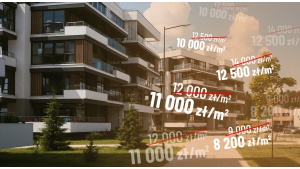
Deweloperzy ukrywają ceny mieszkań. Z troski o klientów czy swoje portfele?
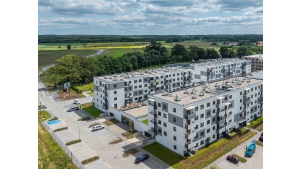
Więcej przestrzeni, mniej hałasu – dlaczego Polacy coraz częściej wybierają przedmieścia?
Więcej ważnych informacji
 Jedynka Newserii
Jedynka Newserii

 Jedynka Newserii
Jedynka Newserii

Konsument

Grupa nowych biednych emerytów stale się powiększa. Ich świadczenie jest znacznie poniżej minimalnej emerytury
Przybywa osób, które z powodu zbyt krótkiego czasu opłacania składek pobierają emeryturę niższą od minimalnej. Tak zwanych nowych biednych emerytów jest w Polsce ok. 430 tys., a zdecydowaną większość grupy stanowią kobiety – wskazują badania ekspertów Instytutu Pracy i Spraw Socjalnych. W ich przypadku krótszy okres składkowy zwykle wynika z konieczności opieki nad dziećmi lub innymi osobami w rodzinie. Wśród innych powodów, wymienianych zarówno przez panie, jak i panów, są także praca za granicą lub na czarno oraz zły stan zdrowia.
Media i PR
M. Wawrykiewicz (PO): Postępowanie z art. 7 przeciw Węgrom pokazało iluzoryczność tej sankcji. Unia wywiera naciski poprzez negocjacje nowego budżetu

Przykład Węgier pokazał, że procedura z artykułu 7 traktatu o UE o łamanie praworządności nie ma mocy prawnej z powodu braku większości, nie mówiąc o jednomyślności wśród pozostałych państw członkowskich. Negocjacje nowego budżetu UE to dobry pretekst do zmiany sposobu części finansowania z pominięciem rządu centralnego. Czerwcowy marsz Pride w Budapeszcie pokazał, że część społeczeństwa, głównie stolica, jest przeciwna rządom Viktora Orbána, ale i na prowincji świadomość konsekwencji działań Fideszu staje się coraz większa przed przyszłorocznymi wyborami.
Firma
Blockchain zmienia rynek pracy i edukacji. Poszukiwane są osoby posiadające wiedzę z różnych dziedzin

Zapotrzebowanie na specjalistów od technologii blockchain dynamicznie rośnie – nie tylko w obszarze IT, ale również w administracji, finansach czy logistyce. Coraz więcej uczelni wprowadza programy związane z rozproszonymi rejestrami, które wyposażają studentów w umiejętności odpowiadające wymogom rynku.
Partner serwisu
Szkolenia
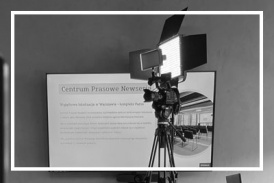
Akademia Newserii
Akademia Newserii to projekt, w ramach którego najlepsi polscy dziennikarze biznesowi, giełdowi oraz lifestylowi, a także szkoleniowcy z wieloletnim doświadczeniem dzielą się swoją wiedzą nt. pracy z mediami.
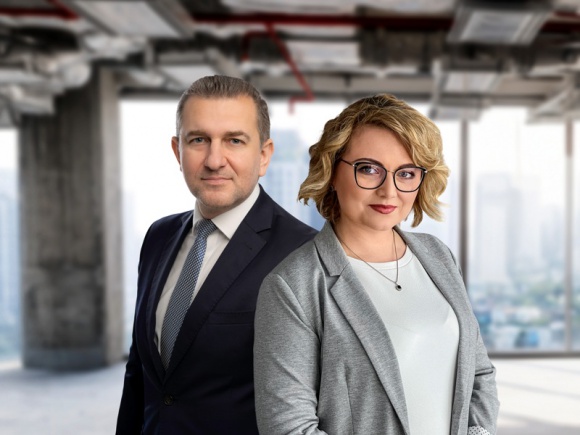

![Nestlé w Polsce podsumowuje wpływ na krajową gospodarkę. Firma wygenerowała 0,6 proc. polskiego PKB [DEPESZA]](https://www.newseria.pl/files/1097841585/fabryka-nesquik_1,w_85,r_png,_small.png)





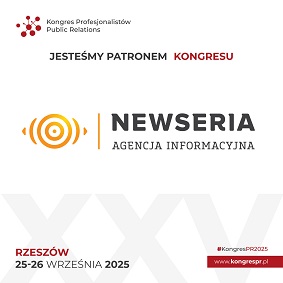
.gif)

 |
| |
| |
|